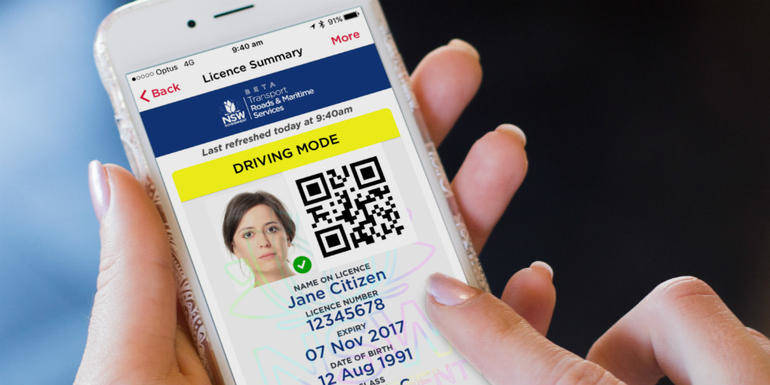The main purpose of a driver’s license is to confirm identity and prove one’s right to operate a vehicle. Imagine being pulled over for a traffic offence and handing over your smartphone instead of a physical driver’s license.
Citizens in New South Wales, Australia, will have access to digital driver’s licenses (DDLs) in a couple of months following successful trials in the city of Dubbo. South Australians have been able to keep DDLs on their mobile devices since September.
Over the past couple of years, several U.S. states have also launched pilot programs to test the process. These mobile driver’s licenses contain a photo, name, address, and date of birth. Other countries such as Britain, Finland, Brazil and India have also either explored the use of digital driver licenses or already have plans to roll them out.
A digital license is convenient for users and law enforcement to share and prove identity. They can be used in roadside stops, to show proof of age, and confirm and verify identity online and off.
Currently, mobile driver’s licenses are meant to serve as secondary forms of ID and are not replacing physical driver’s licenses.
Digital security company Gemalto was awarded a $2 million grant to implement a pilot program for a secure digital driver’s license in four U.S. jurisdictions – Idaho, Colorado, Maryland and Washington D.C.
According to the company, in order to be considered “a trusted digital identity,” mobile driver’s licenses need to be accessible both online and off, be highly secure to protect user privacy, be interoperable between various authorities, and have the ability to manage data integrity.
Authorities will be able to determine if a license is fraudulent because it is checked with the issuer backend in real time, Gemalto points out. In addition, if someone loses their mobile device, the digital license can be remotely deactivated or completely erased.
Of particular concern to people are user-friendliness and security. Privacy is ensured because there is no geolocation tagging, third parties cannot access it without consent, the license and phone are not tracked, and users decide when to show it and what data to share.
Gemalto notes: “This form of digital credential could enable a new, more efficient and more secure way of authenticating a person and their entitlement for a range of personal identification usages.”


